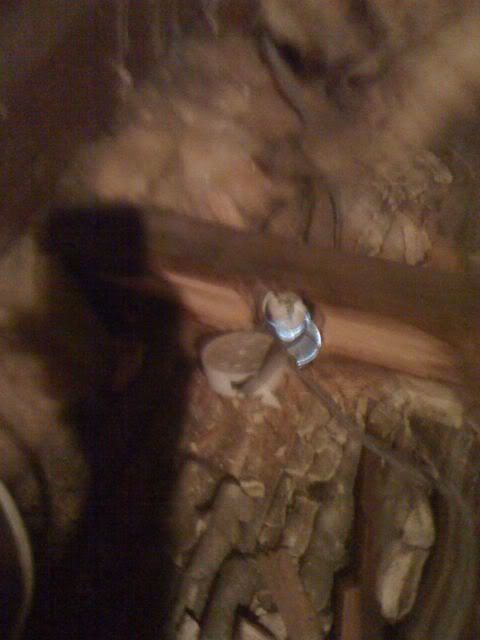Robojin
Well-known member
- Joined
- Jan 22, 2009
- Messages
- 1,122
- Reaction score
- 0
I was at the property to sort out a TV cabling solution, and the customer asked if I could look a a downlight in the kitchen that did not work, took the fitting out and found the the transformer had blown, as I'm looking at the hole I realise that this fitting had been installed touching a joist, so told them I would not replace unless it was moved.
While I'm looking at this fitting the husband (pensioner) asked if I was NICEIC certified, because he needed to know if it was safe to have loft insulation installed (I guess the insulation company had told him he needed an NIC contractor to check first, progress it seems)
I told him that as I needed to go up in the loft to check the TV aerial I'd cast an eye over the electrics, and venture an opinion on suitability

Sorry for the poor image, no flash on phone
Yes your eyes do not deceive you!!, why let a ceiling joist get in the way of the pattern you want for your downlights, so far as I could tell this idiot had removed about 75% of the joist rather than cut a new hole in a safer place OMG!, I then had retrace my steps, bit like a mine field Pray that I did not tread on another like it!!
I've told this chap that this needs to be disconnected from circuit ASAP, and all the downlights need to be either upgraded/firehood/removed before any insulation is installed
So far as I could tell every bedroom has them, and must be 40+, to me it looks as if the cost of sorting this lot out will outweigh any insulation saving for several years, any thoughts on cost effective solutions to this one?
While I'm looking at this fitting the husband (pensioner) asked if I was NICEIC certified, because he needed to know if it was safe to have loft insulation installed (I guess the insulation company had told him he needed an NIC contractor to check first, progress it seems)
I told him that as I needed to go up in the loft to check the TV aerial I'd cast an eye over the electrics, and venture an opinion on suitability

Sorry for the poor image, no flash on phone
Yes your eyes do not deceive you!!, why let a ceiling joist get in the way of the pattern you want for your downlights, so far as I could tell this idiot had removed about 75% of the joist rather than cut a new hole in a safer place OMG!, I then had retrace my steps, bit like a mine field Pray that I did not tread on another like it!!
I've told this chap that this needs to be disconnected from circuit ASAP, and all the downlights need to be either upgraded/firehood/removed before any insulation is installed
So far as I could tell every bedroom has them, and must be 40+, to me it looks as if the cost of sorting this lot out will outweigh any insulation saving for several years, any thoughts on cost effective solutions to this one?





